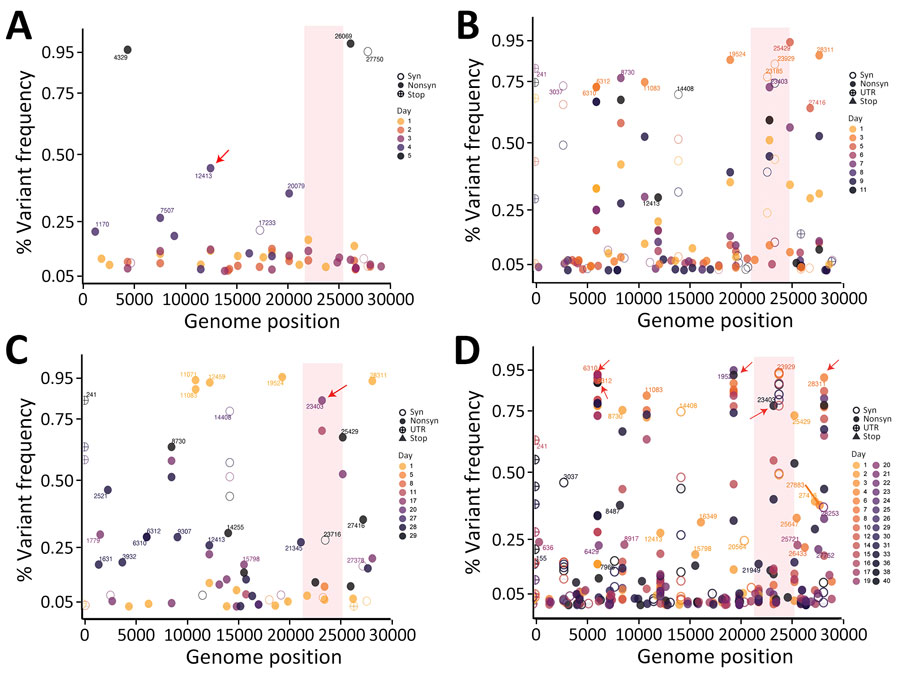Volume 31, Number 8—August 2025
Research
Rapid Emergence and Evolution of SARS-CoV-2 Intrahost Variants among COVID-19 Patients with Prolonged Infections, Singapore
Figure 6

Figure 6. Temporal evolution of iSNVs in study of rapid emergence and evolution of SARS-CoV-2 intrahost variants among COVID-19 patients with prolonged infections, Singapore. The dot plots illustrate iSNVs detected over time and their fluctuations throughout the course of infection in 4 patients: A) patient 6, a 28-year-old man, who had a short infection and hospitalization lasting 7 days; B) patient 2, a 48-year-old man, who had a longer infection and hospitalization of 13 days; C) patient 4, a 65-year-old-man, who had a prolonged infection and hospitalization lasting 30 days; and D) patient 3, a 70-year-old man, who had a prolonged infection and hospitalization lasting 40 days. Colored gradient circles represent days of infections, and the shaded vertical bar indicates the spike region. Red arrows indicate nonsynonymous iSNVs that persisted at high frequency. iSNVs, intrahost single-nucleotide variants; nonsyn, nonsynonymous variants; syn, synonymous variants; UTR, untranslated region.